The Map Is Not the Territory

Finding a place, truly knowing it, and holding onto that knowledge are challenges I found extremely elusive. They bring to mind the Zen koan of the Buddha Holding a Flower: Once, when the World-Honored One in ancient times was upon Vulture Peak, he held up a flower before the assembly of monks. At this all were silent. The Venerable Kashyapa alone broke into a smile. The World-Honored One said, “I have the all-pervading Eye of the True Dharma, the Secret Heart of Incomparable Nirvana, the True Aspect of Formless Form. It does not rely on letters and is transmitted outside the sutras. I now hand it on to Mahakashyapa.”
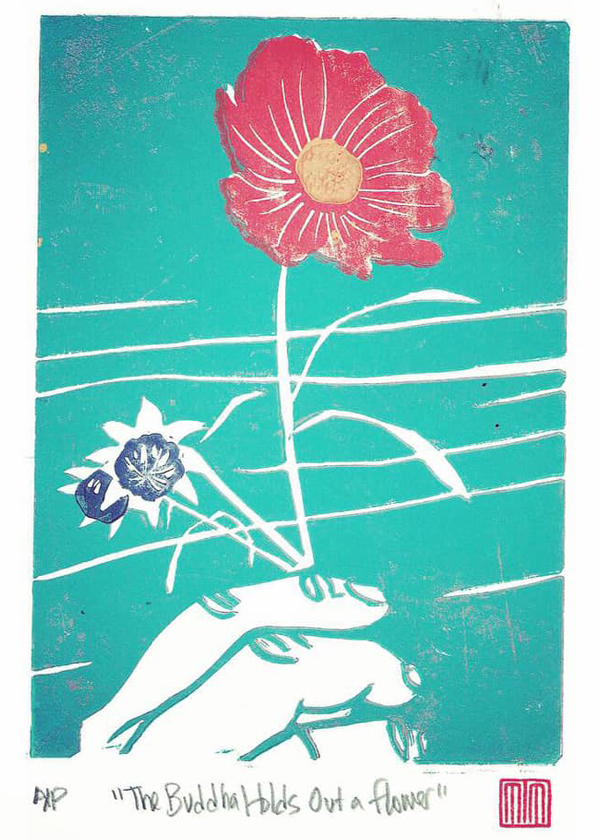
What is it to know the experiential place vs. the conceptual? What could the Buddha’s flower and Kashyapa’s smile convey that could not be found in letters? Maps as a representational narration are instrumental in delivering us from point A to point B, but they’re not the place itself. So, how do we use this tool without getting entangled within the lines? And having experienced a place firsthand, how do we keep that vibrant memory alive? It’s difficult, and I often fall short. But that was the question of this month’s exploration for a piece of artwork to convey “The Map Is Not the Territory.”
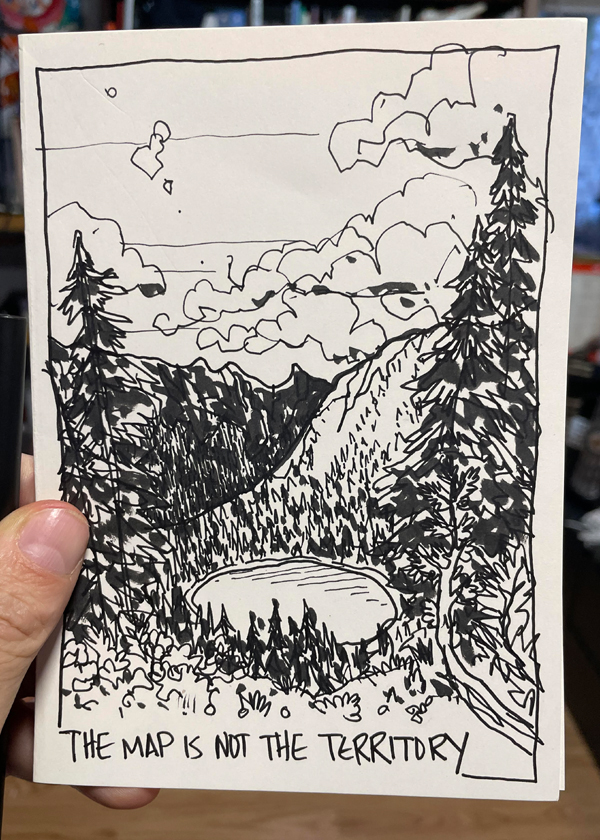
Before I continue, I’d note that maps connect very well to my recent preoccupation with walking, which was born from last year’s hike. For most of my adult life, meditation has existed for me in two routes, either as Zazen, the Japanese Zen Buddhist form of seated meditation, or in art-making. However, the introduction of walking as a form of meditation has offered an exciting possibility to me and has everything to do with the direction I went this month.
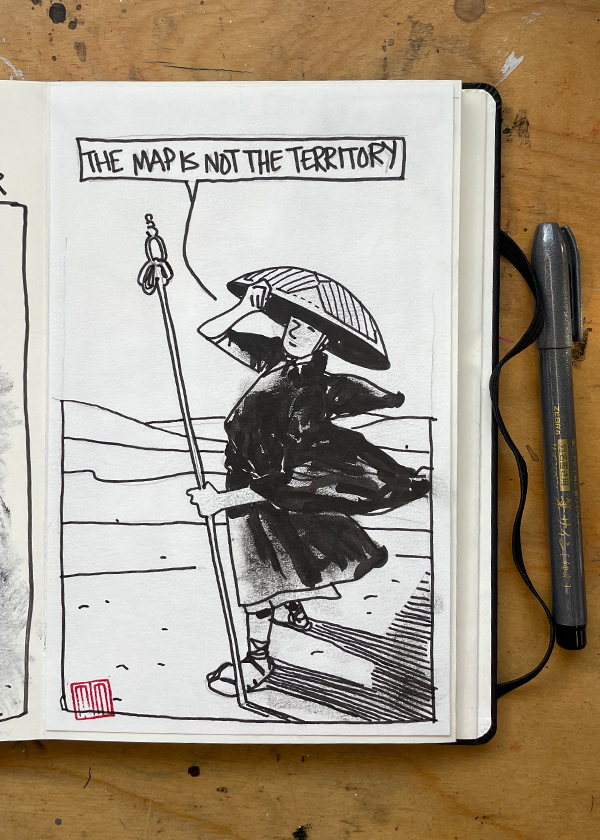
The questions about maps initially had me asking where I had encountered maps in my own life, and my most prominent introduction came as a Coast Guard sailor apprenticing as a Quartermaster or ship navigator. My responsibilities were navigation watches, maintaining bridge charts and equipment, and, when the ship conducted special operations, I was the master helmsman, which sounds wonderfully significant, but mostly, it just means I was good at following orders. During that time, I was training to become an interpreter of maps or charts within the endless movement of the sea, a deeply unknowable territory that can quickly and acutely make one aware of the limits of the conceptual.
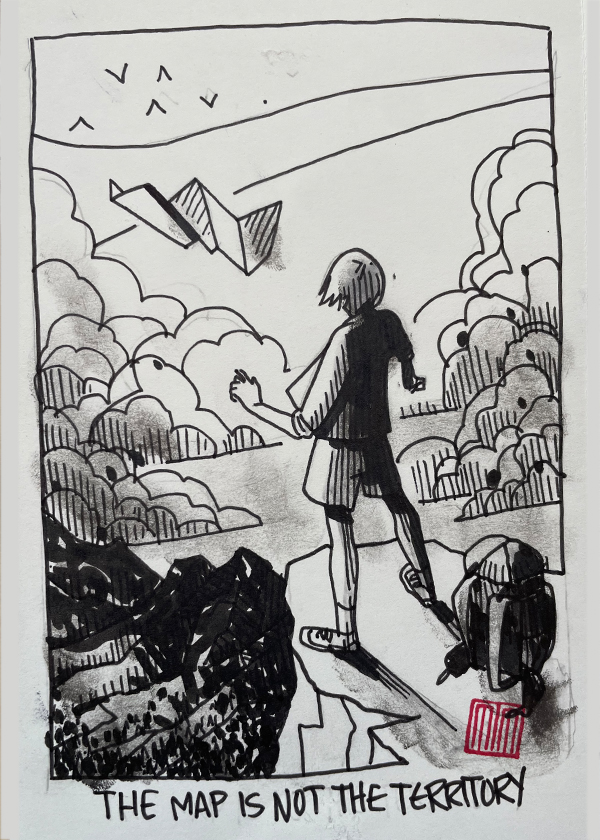
The book The Map Thief also serendipitously crossed my path this month. It conveys two stories: first, how an antique map dealer became a map thief, and second, the rich history of map-making and path-finding. It is an intricate narrative of exploration and innovation that wonderfully highlights how fortunate we are today to navigate with such precision—a powerful tool but not the territory.
Continuing from there, my search broadened into a fantastic array of language and lore concerning maps, landscapes, and pathways, specifically those connected to the act of walking. Australian Aboriginal Songlines with their ancient “dreaming tracks”. Terms like “foil” (faint traces of animal passage) and “desire lines” (organic unplanned footpaths) all conveyed an expanded sense of how we can experience a place.
While these starting points were fantastic, and I look forward to returning to them, I often find it too easy to linger in the world of maps, postponing the actual journey. The pressing question for me is how to stay, hold on, or return to the territory. Rebecca Solnit’s statement in Wanderlust, offers an intriguing perspective that intersects with what I have been sensing “Walking is one way of maintaining a bulwark against the erosion of the mind, the body, the landscape, and the city, and every walker is a guard on patrol to protect the ineffable.” Perhaps simply embarking on a walk embodies the answer to my pursuit of experiential understanding versus conceptual knowledge that can foster a reconnection with the ineffable?
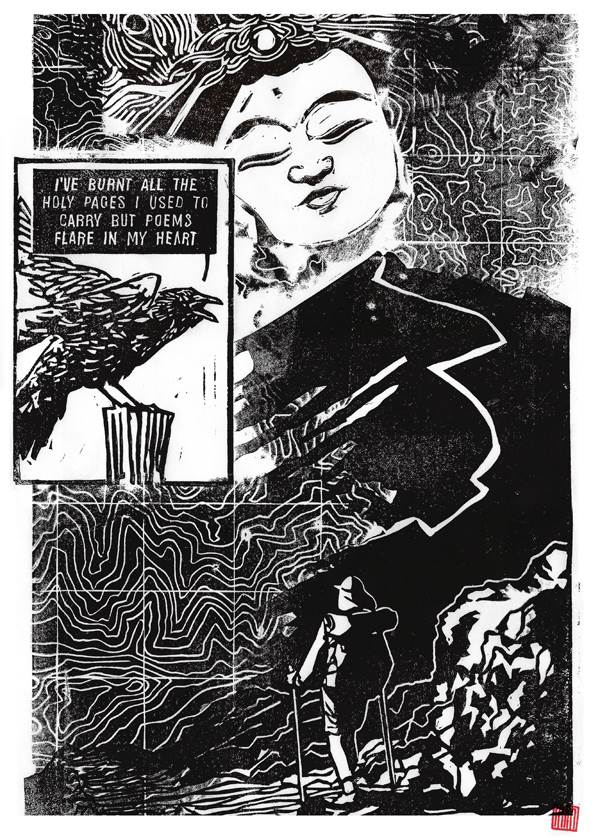
Newsletter
Receive a monthly update on all my side roads, points of inspiration, and progress. As a thank you, after subscribing, your confirmation email will provide a link to a free print-quality digital print.

